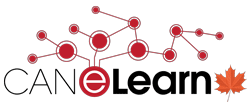|
Jose Bidarra, Ellen Rusman
This paper proposes a design framework to support science education through blended learning, based on a participatory and interactive approach supported by ICT-based tools, called Science Learning Activities Model (SLAM). The development of this design framework started as a response to complex changes in society and education (e.g. high turnover rate of knowledge, changing labour market), which require a more creative response of learners to the world problems that surround them. Many of these challenges are related to science and it would be expected that students are attracted to science, however the contrary is the case. One of the origins of this disinterest can be found in the way science is taught. Therefore, after reviewing the relevant literature, the authors propose the SLAM framework as a tool to aid the design of science courses with high motivational impact on students. The framework is concerned with the assumption that science learning activities should be applicable and relevant to contemporary life and transferable to ‘real-world’ situations. The design framework proposes three design dimensions: context, technology and pedagogy, and aims at integrating learning in formal and informal contexts through blended learning scenarios by using today’s flexible, interactive and immersive technologies (e.g. mobile, augmented reality, virtual reality). |
